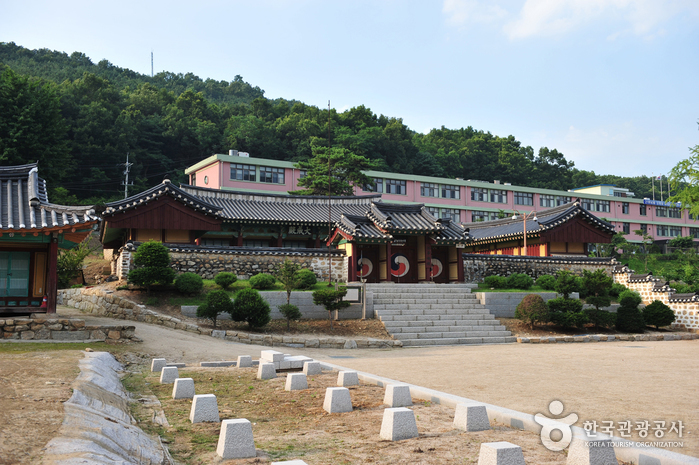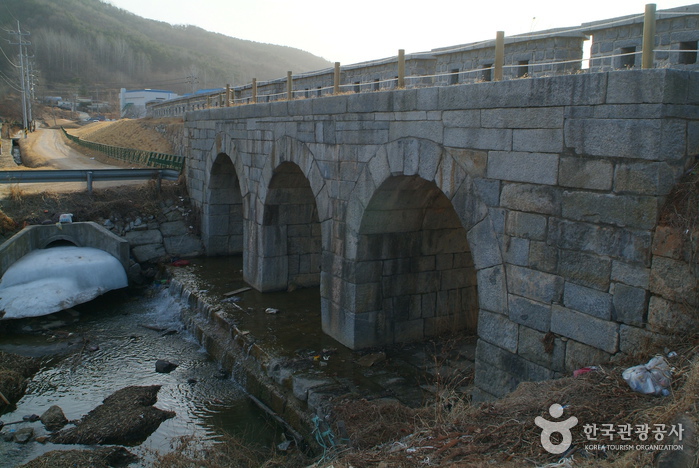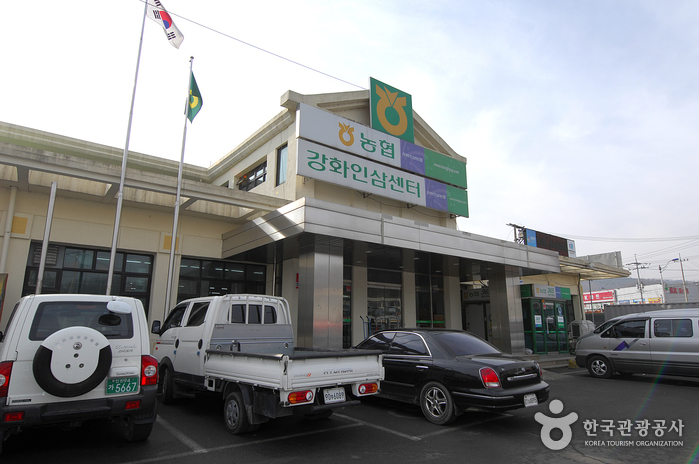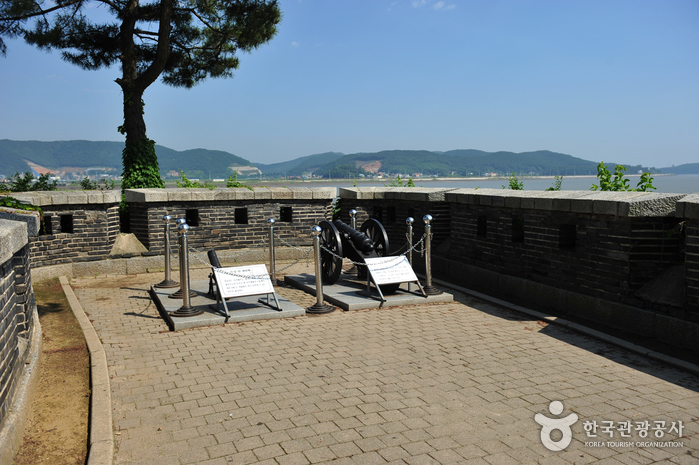[Ganghwa Nadeul-gil Course 5] Gobigogae Pass Trail ([강화 나들길 제5코스] 고비고개길)
628.6M 2021-02-23
24, Cheonghadong-gil, Ganghwa-gun, Incheon
+82-32-934-1906
The Ganghwa Nadeul-gil Trails are a collection of walking paths along the coast of Ganghwa Island that connect the watchtowers and and walls of Ganghwasanseong Fortress, as well as royal tombs and other historically significant sites from the Goryeo dynasty that dot the island.
[Ganghwa Nadeul-gil Course 5] Gobigogae Pass Trail
Course 5 stretches over a 20.2 kilometer section between Ganghwa Bus Terminal and Oepo Passenger Terminal. This trail is a restoration of the path crossing the low mountain, walked on by past generations when visiting Ganghwa Market.
[Ganghwa Nadeul-gil Course 4] Sunset Village Trail ([강화 나들길 제4코스] 해가 지는 마을 길)
628.6M 2021-02-23
24, Cheonghadong-gil, Ganghwa-gun, Incheon
+82-32-934-1906
The Ganghwa Nadeul-gil Trails are a collection of walking paths along the coast of Ganghwa Island that connect the watchtowers and and walls of Ganghwasanseong Fortress, as well as royal tombs and other historically significant sites from the Goryeo dynasty that dot the island.
[Ganghwa Nadeul-gil Course 4] Sunset Village Trail
Course 4 stretches over an 11.5 kilometer area between Gareung Tomb and Mangyangdondae Fortification. This trail is especially popular among couples thanks to the romantic views of the sunset along the way. Other views include farming communities and fish markets.
[Ganghwa Nadeul-gil Course 3] Royal Tomb Trail ([강화 나들길 제3코스] 고려왕릉 가는 길)
628.6M 2021-06-02
24, Cheonghadong-gil, Ganghwa-gun, Incheon
+82-32-934-1906
The Ganghwa Nadeul-gil Trails are a collection of walking paths along the coast of Ganghwa Island that connect the watchtowers and and walls of Ganghwasanseong Fortress, as well as royal tombs and other historically significant sites from the Goryeo dynasty that dot the island.
[Ganghwa Nadeul-gil Course 3] Royal Tomb Trail
Course 3 stretches over a 16.2 kilometer area between Onsu Parking Lot and Gareung Tomb. This trail showcases the royal tombs of the Goryeo dynasty. The trail passes through forested areas between tombs and temples.
[Ganghwa Nadeul-gil Course 1] Simdo History & Culture Trail ([강화 나들길 제1코스] 심도역사문화길)
628.6M 2022-09-27
24, Cheonghadong-gil, Ganghwa-gun, Incheon
+82-32-934-1906
The Ganghwa Nadeul-gil Trails are a collection of walking paths along the coast of Ganghwa Island that connect the watchtowers and and walls of Ganghwasanseong Fortress, as well as royal tombs and other historically significant sites from the Goryeo dynasty that dot the island.
[Ganghwa Nadeul-gil Course 1] Simdo History & Culture Trail
Course 1 stretches over an 18-kilometer area between Ganghwa Bus Terminal and Gapgot Fortification. The trail includes sites such as Yongheunggung Palace, Ganghwahyanggyo Local Confucian School and an Anglican church. The course is an easy walk, with plenty of areas to stop and explore, as well as restaurants and convenience facilities for an enjoyable stroll.
Ganghwahyanggyo Confucian School (강화향교)
677.6M 2020-06-29
58, Hyanggyo-gil, Ganghwa-gun, Incheon
+82-32-930-4571
First established in Ganghwa-eup during the 5th year of King Injong in the Goryeo dynasty (1127), Ganghwahyanggyo Confucian School was moved to Ganghwa-gun and then restored at the foot of Buksan Mountain (formally Songaksan Mountain) in 1624 by Sim Yeol during the 2nd year of King Injo.
Ganghwahyanggyo Confucian School is regarded as an important cultural and historical site in Ganghwa-eup.
Ganghwa Seoksumun Gate (강화 석수문)
977.5M 2020-02-06
Gukhwa-ri, Ganghwa-gun, Incheon
+82-32-930-4571
Seoksumun is a floodgate on the Dongnakcheon Stream, which flows through the town of Ganghwa-eup. The floodgate was built in 1711 (37th year of King Sukjong’s reign during the Joseon Period) and it is connected to the inner walls of the Ganghwasanseong Fortress. It is an arched structure with a design of three rainbows coming together. Made of granite, the floodgate measures 18.2 meters in length and 2.7 meters in x_height, while the arches are 1.7 meters tall, and 3 meters wide.
Ganghwa Ginseng Center (강화 인삼센터)
1.2Km 2021-05-07
335, Ganghwa-daero, Ganghwa-gun, Incheon
+82-10-9314-3348
The cultivation of Ganghwa ginseng began during the era of King Gojong (A.D. 1232) of the Goryeo dynasty. In 1920, Ganghwado Island was designated a special district for ginseng cultivation. At the onset of the Korean War (1950-1953), the people of Gaeseong, the birthplace of ginseng cultivation, took refuge on Ganghwado Island and began to cultivate ginseng on a large scale, which was the beginning of the production of the famous 6-year-old root of ginseng.
Ganghwado Island has the optimal environment for ginseng cultivation with clay soil, sandy loam, and a cool climate condition influenced by coastal winds. The thick root of Ganghwa ginseng does not have any inside cavity or white interior. This is how Ganghwa became a leading producer of the 6-year-old root, which has a high rate of red ginseng extract, cheonji.
Ganghwa Ginseng Center handles quality ginseng guaranteed in its cultivation, processing, and distribution, owing to the utmost care exerted to provide safe and reliable products.
Yeonmijeong Pavilion (연미정)
3.2Km 2022-08-30
242, Wolgot-ri, Ganghwa-gun, Incheon
+82-32-930-3124
Yeonmijeong Pavilion is Incheon's Tangible Cultural Asset No. 24 (designated on March 1, 1995).
While the exact date of construction is unknown, the pavilion was greatly damaged and then rebuilt afterwards due to the Japanese Invasion of Korea in 1592, the Byeongja Chinese Invasion in 1636, and the Korean War on June 25, 1950.
The name Yeonmi comes from the swallow tail-shape of Imjingang River and Yeomhagang River ('yeon' means swallow and ‘mi’ means a tail). As the pavilion stands on top of Wolgotdondae, visitors can see Paju-si, Gimpo-si, Gaepung-gun in Hwanghae-do (North Korea) at a glance.
[Ganghwa Nadeul-gil Course 2] Homeland Fortification Trail ([강화 나들길 제2코스] 호국돈대길)
3.3Km 2021-08-11
24, Cheonghadong-gil, Ganghwa-gun, Incheon
+82-32-934-1906
The Ganghwa Nadeul-gil Trails are a collection of walking paths along the coast of Ganghwa Island that connect the watchtowers and and walls of Ganghwasanseong Fortress, as well as royal tombs and other historically significant sites from the Goryeo dynasty that dot the island.
[Ganghwa Nadeul-gil Course 2] Homeland Fortification Trail
Course 2 stretches over a 17 kilometer area between Gapgotdon Watchtower and Chojijin Fort. This trail showcases the history of the island and the changes that happened before and after the opening of the port. The course follows a coastal road that is particularly beautiful in spring and fall.
Gapgotdon Watchtower (갑곶돈대)
3.4Km 2021-01-18
18, Haeandong-ro 1366beon-gil, Ganghwa-gun, Incheon
+82-32-930-7077
Gapgotdon Watchtower was built to protect the Ganghwa Straits from invasion when the Goryeo Kingdom moved their capital to Ganghwado Island. The fortified area served as a highly strategic location for the Goryeo Kingdom, and had endured multiple invasions by the Mongolian troops between 1232 and 1270.
The watchtower was fortified in the Joseon dynasty by King Sukjong in 1679 and had once fallen during the French campaign against Korea in 1866. In 1977, the site was restored to its original form. The cannons exhibited at the current site were made during the Joseon dynasty to attack outside invaders from sea.
![[Ganghwa Nadeul-gil Course 5] Gobigogae Pass Trail ([강화 나들길 제5코스] 고비고개길)](http://tong.visitkorea.or.kr/cms/resource/21/1895221_image2_1.jpg)
![[Ganghwa Nadeul-gil Course 4] Sunset Village Trail ([강화 나들길 제4코스] 해가 지는 마을 길)](http://tong.visitkorea.or.kr/cms/resource/16/1895216_image2_1.jpg)
![[Ganghwa Nadeul-gil Course 3] Royal Tomb Trail ([강화 나들길 제3코스] 고려왕릉 가는 길)](http://tong.visitkorea.or.kr/cms/resource/11/1895211_image2_1.jpg)
![[Ganghwa Nadeul-gil Course 1] Simdo History & Culture Trail ([강화 나들길 제1코스] 심도역사문화길)](http://tong.visitkorea.or.kr/cms/resource/97/1895197_image2_1.jpg)




![[Ganghwa Nadeul-gil Course 2] Homeland Fortification Trail ([강화 나들길 제2코스] 호국돈대길)](http://tong.visitkorea.or.kr/cms/resource/05/1895205_image2_1.jpg)

 English
English
 한국어
한국어 日本語
日本語 中文(简体)
中文(简体) Deutsch
Deutsch Français
Français Español
Español Русский
Русский